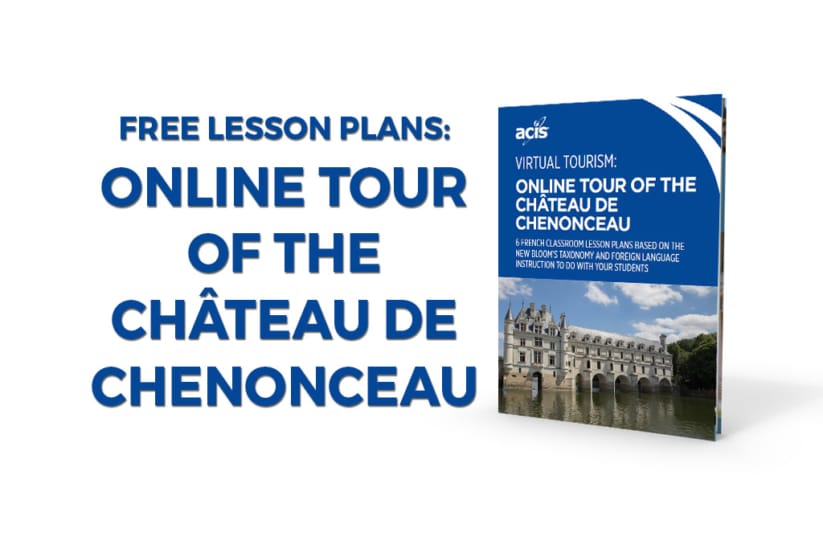Virtual Tourism – Online Tour of the Château de Chenonceau [6 LESSON PLANS]

When it comes to learning a world language, there’s no better way than to immerse students in the culture of the target language. That’s where the language comes alive and provides the depth in which students can explore, discover and understand on their own what makes the language what it is.
Click here to download the 6 Lesson Plans on The Château de Chenonceau
We believe extending the classroom to the real-world and giving students the opportunity to learn experientially is the absolute best way to empower students to become global citizens. That’s why we’ve enlisted the help of retired world languages teacher and ACIS Academic Travel Advisor Nicolette Miller to create these 6 Lesson Plans based on The New Bloom’s Taxonomy for World Language Instruction. She uses an Online Tour of The Château de Chenonceau in The Loire Valley of France as the subject matter for 6 different lesson plans.
This guide is for French teachers who wish to make their language instruction and cultural lessons about the target language come alive through virtual tourism in the world language classroom.
Taking an online virtual tour of the Château de Chenonceau provides a lesson in 16th-century French architecture, an opportunity for French students to use the target language, and to learn about the role of the castle in French history while using Interpersonal, Interpretive, and Presentational communication.
These 6 Lesson Plans engage students in all 3 types of communication according to the ACTFL Standards:
- Interpersonal Communication
- Interpretive Communication
- Presentational Communication
While experiencing The Château de Chenonceau in person is a life-changing experience, we hope exposing your students to French culture via these lesson plans gives your students the inspiration to take the leap into exploring The Château de Chenonceauin the real world.
FREE LESSON PLAN
Online Tour of the Château de Chenonceau Plan
6 French Classroom Lesson Plans to do with Your Students Based
on the New Bloom’s Taxonomy For World Language Instruction.










